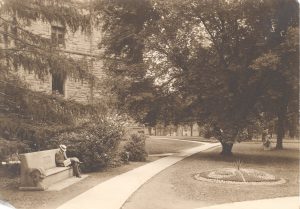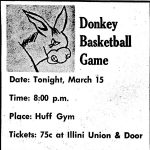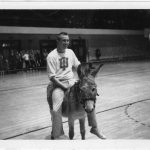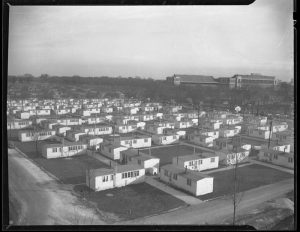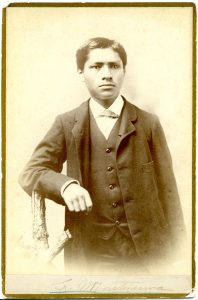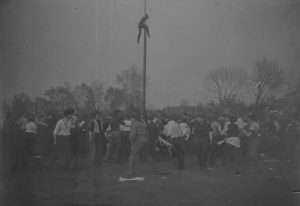
Written by Anna Trammell
We all know that the representative colors of the University of Illinois are orange and blue. For many years, however, students showed loyalty to their individual class by displaying a different set of colors. The tradition of class colors began early in the University’s history. In 1891, the first Color Rush was held. A 1921 Daily Illini article describes the event by saying: “Two poles greased and bearing the class colors at the top were planted about 60 feet apart. Equal numbers of freshmen and sophomores guarded the poles which bore their colors while two other groups, equally divided, sought to tear down the colors.”[1] This battle between freshmen and sophomores, which often ended with injuries and suspensions, was eventually retired. But the tradition of class colors remained. Continue reading “Campus Traditions: Class Colors and the Color Rush”
